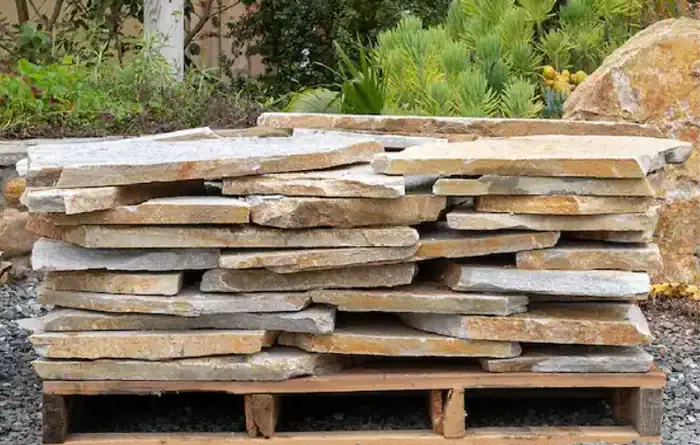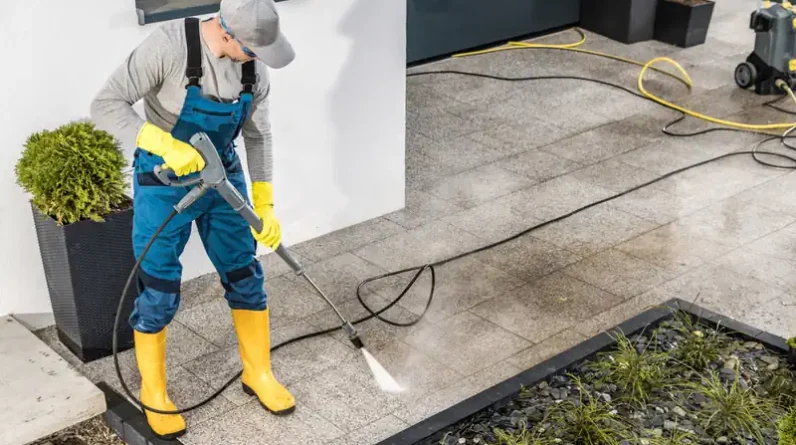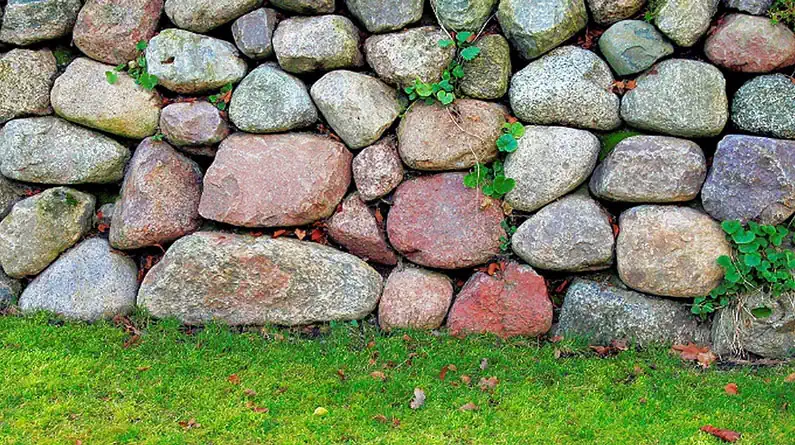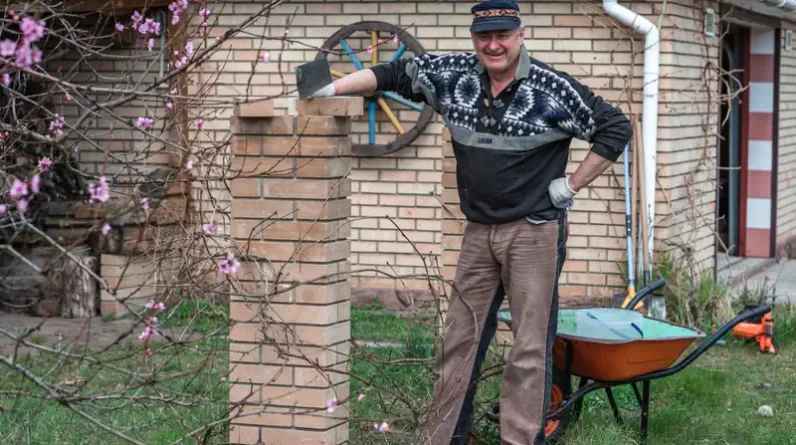
Creating a beautiful outdoor space that complements your home can do wonders for enhancing curb appeal and increasing the value of your property. With a little bit of creativity and some hard work, you can transform your yard into a welcoming oasis for family and guests to enjoy.
While hiring a professional hardscaping contractor can be costly, there are plenty of DIY hardscaping projects you can tackle on your own. In this article, we will be sharing some fun and inspiring DIY hardscaping projects that you can start working on today to add personality and style to your yard. So roll up your sleeves, grab some tools, and let’s get started!
Designing Your Home’s Outdoor Space
Designing your home’s outdoor space is an exciting project to undertake. With the right hardscaping design, you can create a backyard oasis that looks great and adds value to your property. Whether you want to makeover your entire landscape or just spruce up a patio area, here are some ideas for getting started:
- Plan out the layout of your garden with sketches on graph paper; consider adding raised flower beds or built-in seating areas.
- Research different types of materials available for hardscaping projects, such as stone slabs, pavers, bricks, and concrete blocks.
- Choose plants that will thrive in your climate zone and don’t require too much maintenance.
- Consult with a local landscaper who can offer advice about planting techniques and soil preparation strategies.
With careful planning and implementation, you can transform your outdoor space into something truly special that you’ll enjoy for years to come!
Materials For DIY Hardscaping Projects
Building a hardscaping project at home can be an incredibly rewarding and cost-effective way to improve the look of your outdoor space. According to one study, a DIY hardscaping project has the potential to increase property value by up to 17%. With this in mind, it’s important that you select the right materials for your hardscaping project. Pavers, stone, gravel, concrete, brick – these are some of the most common materialshttp://how-to-choose-the-right-hardscaping-materials-for-your-yard used in hardscaping projects.
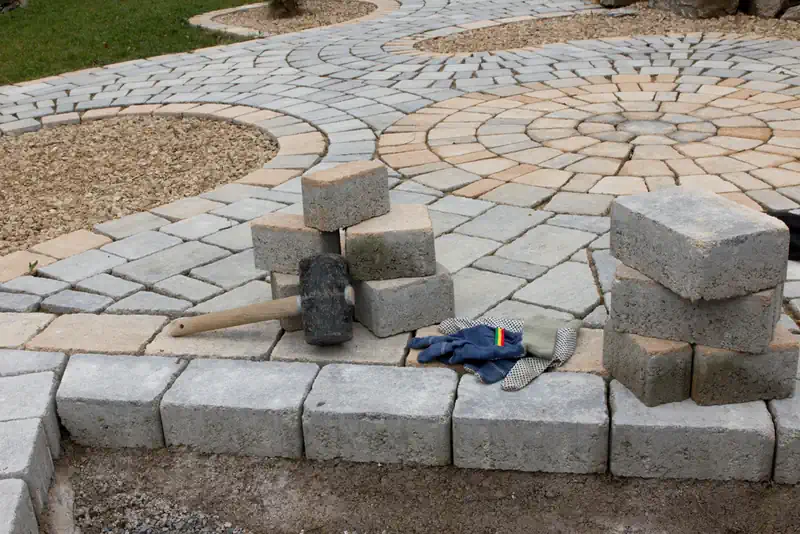
Pavers come in a variety of shapes and sizes and are typically made from either clay or concrete. Clay pavers tend to be more expensive but they last longer than their concrete counterparts. Stone is also popular for pathways and patios because it blends naturally into its surroundings with no effort required on your part. Gravel is another great option as it’s relatively inexpensive and easy to install. Concrete blocks are perfect if you’re looking for something more industrial-looking in design, while bricks offer a classic finish that never goes out of style.
No matter what material you choose for your project, make sure you take time to consider all aspects before making any decisions so that you get the best results possible. It’s also important to remember that each material requires different levels of maintenance over time; research thoroughly beforehand so that you know exactly what kind of upkeep will be necessary moving forward.
Step-By-Step Guide To Creating Your Own Project
Starting a DIY hardscaping project for your home can be an exciting and rewarding experience. But before you get started, it’s important to make sure that you have the right materials and instructions on hand for the job. Here’s a simple step-by-step guide to creating your own hardscaping project:
- First, research different types of projects online or in magazines to find one that fits with your needs and style. You’ll want to consider factors such as cost, complexity, and size when deciding what type of project will work best for you.
- Next, take accurate measurements of the area where the project will be built – this is essential if you’re working with multiple pieces or sections! Make sure to draw out a detailed diagram so that everything goes together properly during assembly.
- Once you’ve finalized your design plan, gather all necessary supplies like paving stones, gravel, sand, and other building materials.
- After gathering all tools needed for construction (like shovels, rakes, trowels), begin assembling the components according to your design plan. Be sure to double check each piece for accuracy before moving onto the next one.
With careful planning and patience throughout the process, your new DIY hardscaping project will soon come alive!
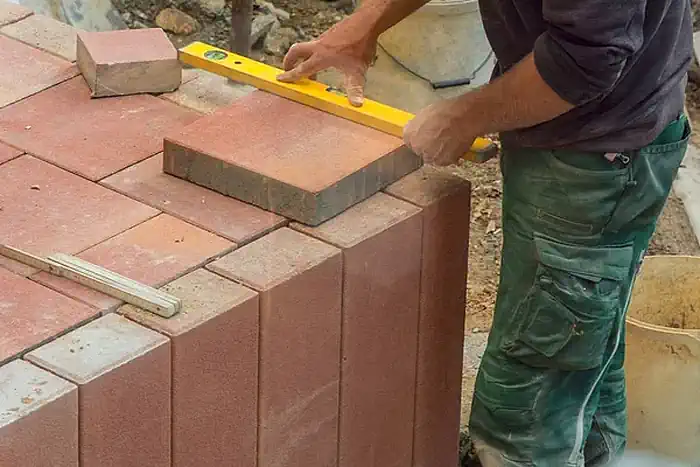
Some DIY Hardscaping Projects You Might Want to Consider
Here are some examples of some fun DIY hardscaping projects that can transform your yard:
- Building a backyard fire pit with pavers or stones for cozy evenings spent outdoors.
- Creating a rustic garden path with natural stones or bricks.
- Building a raised garden bed using retaining wall blocks.
- Designing and building your own patio with concrete pavers or flagstone.
- Installing a water feature like a pond or fountain for a soothing and relaxing outdoor feature.
- Constructing a retaining wall to level off a slope or to create a focal point or seating area.
- Building a decorative wall using faux stone or brick veneers.
- Creating custom landscaping borders using rocks or large stones.
- Installing a pergola or arbor using wood and metal materials to provide a shaded seating area.
These DIY projects not only add personality and style to your yard but also help increase the value of your property while providing an opportunity for some fun and engaging outdoor activities.
Maintenance Tips And Considerations
It’s true that hardscaping projects can be a great way to add beauty and value to your home. However, it is also important to consider the long-term maintenance of these structures. Proper patio maintenance, landscape maintenance, hardscaping care, outdoor upkeep, and hardscape cleaning are essential in order to keep them looking their best for years to come.
First and foremost, you should inspect all hardscaping materials regularly for wear and tear or damage due to weather conditions such as wind or rain. If any problems arise with your project, they should be addressed immediately by either repairing the damaged area or replacing it altogether. Additionally, it’s important to ensure that moisture levels around your structure remain consistent; too much water can lead to mold growth and erosion, while not enough can cause cracks in the material.
Regularly sweeping away debris from patios and walkways is another key component of hardscape maintenance. Doing so ensures that dirt does not accumulate or become packed down into the structure from foot traffic over time. You should also pressure wash your outdoor area annually (or more often if necessary) to remove built up grime from surfaces like concrete pavers or stone slabs. When choosing an appropriate detergent for this job, make sure it doesn’t contain harsh chemicals that could harm plants nearby.
With some basic knowledge about proper maintenance techniques, you’ll have no problem keeping your beautiful new project looking its best!
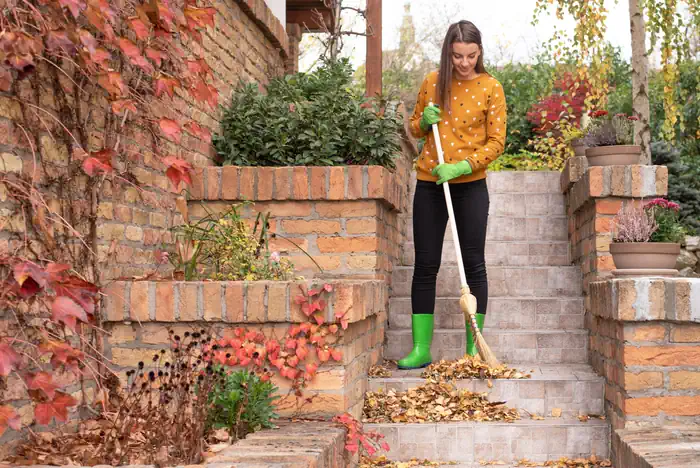
Frequently Asked Questions
What Is The Best Type Of Hardscape Material To Use In My Climate?
When it comes to hardscaping materials, the climate you live in can have a big influence on which type is best for your home. Different weather conditions may require different types of durable materials that will serve you well over time.
To help determine what the best options are for your area, consider these factors:
- Climate and temperature range – The material you choose should be able to withstand the coldest temperatures as well as hotter, sunnier days if applicable.
- Rainfall – How much precipitation typically falls throughout the year? Is there usually light rain or heavy downpours? This information also affects which materials would work better than others.
- Snowfall – If your region gets snow, then having an option that won’t crack or break due to freeze/thaw cycles is important.
- Wind speed and direction – Certain areas tend to get gusts of wind at certain times of year while other parts of the country remain relatively calm all season long. Choosing a material with some flexibility might be necessary depending on where you live.
Considering all these variables together can provide insight into what kind of hardscape materials are most suited for your particular climate. It’s worth taking the time to research and compare products before making a decision so you don’t end up with something that doesn’t last under local weather conditions.
How Can I Achieve A Professional-Looking Result With My DIY Hardscaping Project?
Achieving a professional-looking result with a DIY hardscaping project can be challenging. Homeowners should consider the various hardscaping techniques and design ideas available to help them create the best outcome for their space. It’s important to choose hardscape materials that are appropriate for your climate, as this will ensure that they last longer and remain in good condition over time.
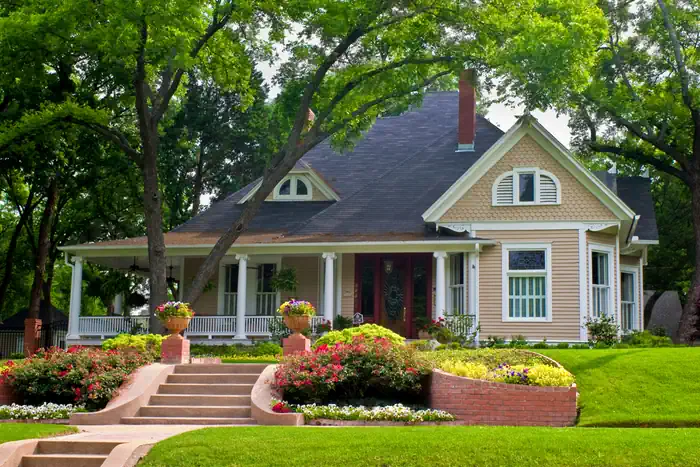
Fortunately, there are many resources available online which provide tips and advice on how to successfully execute home improvement projects like these. From tutorials on installing pavers and stone walls to detailed instructions about choosing the right type of hardscaping materials for your area, there is something out there for everyone.
Here are some online resources that focus on hardscaping:
- Hardscape Magazine – This is a print and online publication that provides in-depth coverage of hardscaping topics, including design ideas, installation techniques, product reviews, and industry news. You can find it at www.hardscapemagazine.com.
- Landscape Architect Magazine – This publication covers various aspects of landscape architecture, including hardscape design and construction. It features articles, case studies, and project profiles related to hardscaping. You can access it online at landscapearchitecturemagazine.org/.
- The Family Handyman – While not exclusively focused on hardscaping, this popular DIY magazine and website often features articles and tutorials on hardscaping projects, such as building patios, pathways, and retaining walls. You can find it at www.familyhandyman.com.
- Houzz – This online platform for home remodeling and design features a section dedicated to hardscaping. It provides a wealth of inspiration and information on hardscape design ideas, products, and professionals. You can visit it at www.houzz.com/photos/query/hardscaping.
- HGTV – This well-known home and garden television network and website offers numerous articles, videos, and tutorials related to hardscaping, covering topics such as outdoor living spaces, fire pits, and garden paths. You can find it at www.hgtv.com/outdoors/topics/hardscaping.
- Belgard – As a leading manufacturer of hardscape products, Belgard’s website offers a wealth of resources on hardscaping, including design ideas, installation guides, and product information. You can access it at www.belgard.com.
- The Concrete Network – This website focuses on all things related to concrete, including hardscaping. It offers articles, photos, and tutorials on various hardscaping projects using concrete, such as driveways, walkways, and outdoor kitchens. You can find it at www.concretenetwork.com. Check out the section on “outdoor concrete”.
These are just a few examples of magazines and online resources that provide information and inspiration for hardscaping projects.
Additionally, it may be beneficial to consult an experienced professional if you’re unsure of what steps to take or need guidance navigating through any difficult tasks.
No matter where you turn for guidance, taking time planning out each step of the process beforehand and following up with regular maintenance afterwards will go a long way towards getting the most out of your DIY hardscaping project and achieving an attractive, professional-looking result at home.
What Safety Measures Should I Take When Hardscaping?
When it comes to hardscaping, safety is essential. Whether you’re working on a DIY project or hiring professionals, there are certain measures that need to be taken in order to ensure the job is done safely. This includes wearing protective clothing and gear, as well as being aware of any potential hazards associated with hardscaping.
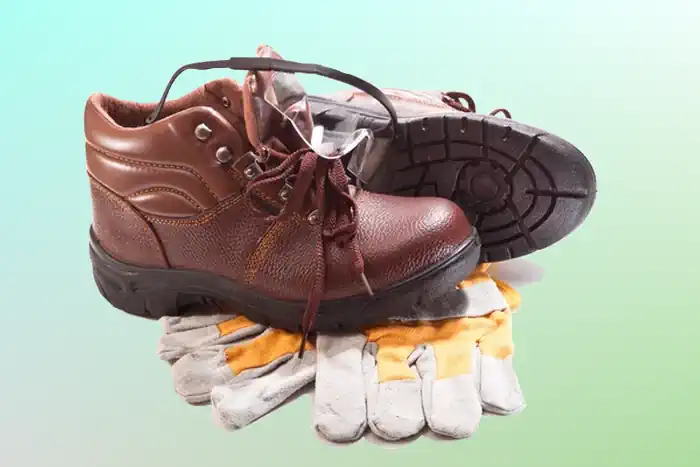
When working outdoors, one should always make sure they have proper safety gear on; this may include gloves, boots, goggles, etc. It’s also important to wear appropriate clothing for the task at hand; long pants and closed-toed shoes are recommended when using tools such as shovels or pickaxes. Additionally, anyone undertaking a hardscaping project should be aware of any risks involved in the process; these could range from electrical shock due to exposed wires to accidentally hitting underground pipes while digging. Being mindful of these dangers can help prevent accidents and injuries during your project.
Ensuring your own safety before beginning a hardscaping project is key – taking the time to prepare properly will help guarantee success! By following all guidelines regarding protective wear and knowing what kinds of hazards may arise while working outdoors with heavy equipment and tools, you’ll be able to complete your DIY hardscaping project with confidence.
How Long Will My Hardscaping Project Take To Complete?
When it comes to hardscaping projects, one of the most important considerations is how long they will take. The time frame for completion depends on several factors such as the scope of labor and materials required, as well as any unexpected obstacles that may arise during construction. If you’re planning a DIY hardscaping project at home, here are some things to keep in mind regarding the duration:
- Labor hours – A major factor when determining project duration is labor hours. Depending on your skill level and complexity of the design elements, this can vary greatly from project-to-project.
- Materials needed – Another key consideration is what type of materials are necessary for completing your project. Certain items like pavers or flagstone may require more effort to transport and install than other supplies like pea gravel or stepping stones.
- Unforeseen issues – Unexpected complications can also extend the length of your project’s completion date if not accounted for beforehand. This could include having difficulty finding certain components or dealing with bad weather conditions which could slow down progress significantly.
- Quality versus quantity – It’s important to remember that quality should take priority over quantity when it comes to hardscaping projects; rushing through a job won’t result in an end product you’ll be proud of! Take your time and ensure proper installation techniques so you don’t have to redo anything later on down the line because of mistakes made during initial setup.
Your project’s completion timeline can depend heavily on these variables, so pay attention to them while calculating an estimated duration for your DIY hardscaping project before getting started – this way, you can plan accordingly and make sure everything runs smoothly throughout its execution!
Are There Any Hardscaping Projects I Can Do Myself Without Specialized Tools?
Yes, there are many hardscaping projects you can do yourself without specialized tools. Inexpensive and simple hardscaping projects abound, so even those with basic skills can get creative and make their home look great. DIY hardscaping ideas range from easy to more complex, depending on the scope of your project.
Easy hardscaping projects include laying down a patio or walkway using stones or pavers; building retaining walls with wood beams; or installing planters for some outdoor greenery. All these require minimal investment in terms of money and time, as well as basic skills in construction and landscaping.
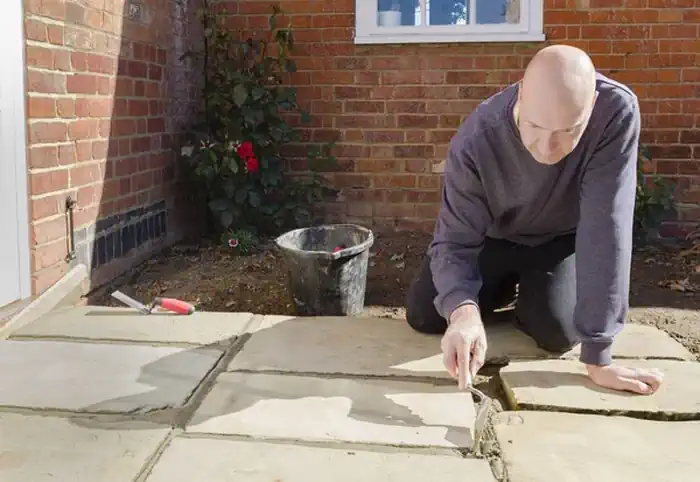
If you’re feeling adventurous, you could also try something more complex like an outdoor kitchen setup or fire pit. These may need professional assistance if it’s your first time attempting them but they’re still achievable by someone with the right knowledge and resources.
No matter what type of hardscaping project you want to undertake, it doesn’t have to be complicated or expensive – all that matters is making sure it achieves its purpose while looking visually appealing! With careful planning and research into available materials, anyone can craft a beautiful landscape addition without having to rely on specialty tools or services.
Hardscaping is a great way to add value and beauty to your home. It’s important to consider the type of materials that will work best in your climate before starting a project, as well as safety measures when working with heavy materials. Depending on the complexity of the job, DIY hardscaping projects can take anywhere from one day up to several weeks for completion. Projects like building patio steps or laying pavers don’t require specialized tools and are easy enough for any beginner to tackle.
For example, I recently built a large paver patio in my backyard using only basic hand tools—a shovel, wheelbarrow, a tape measure, and mallet. Despite having no prior experience with hardscaping, I was able to achieve an impressive result by taking it slow and being mindful of safety at all times. It took me about two days total; however, if you plan ahead and have some help available, you could be finished in just one weekend!

Overall, DIY hardscaping can be a rewarding experience if done safely and properly. With the right planning and knowledge base, anyone can create beautiful outdoor living spaces that they can enjoy year-round—all while adding value to their home.


